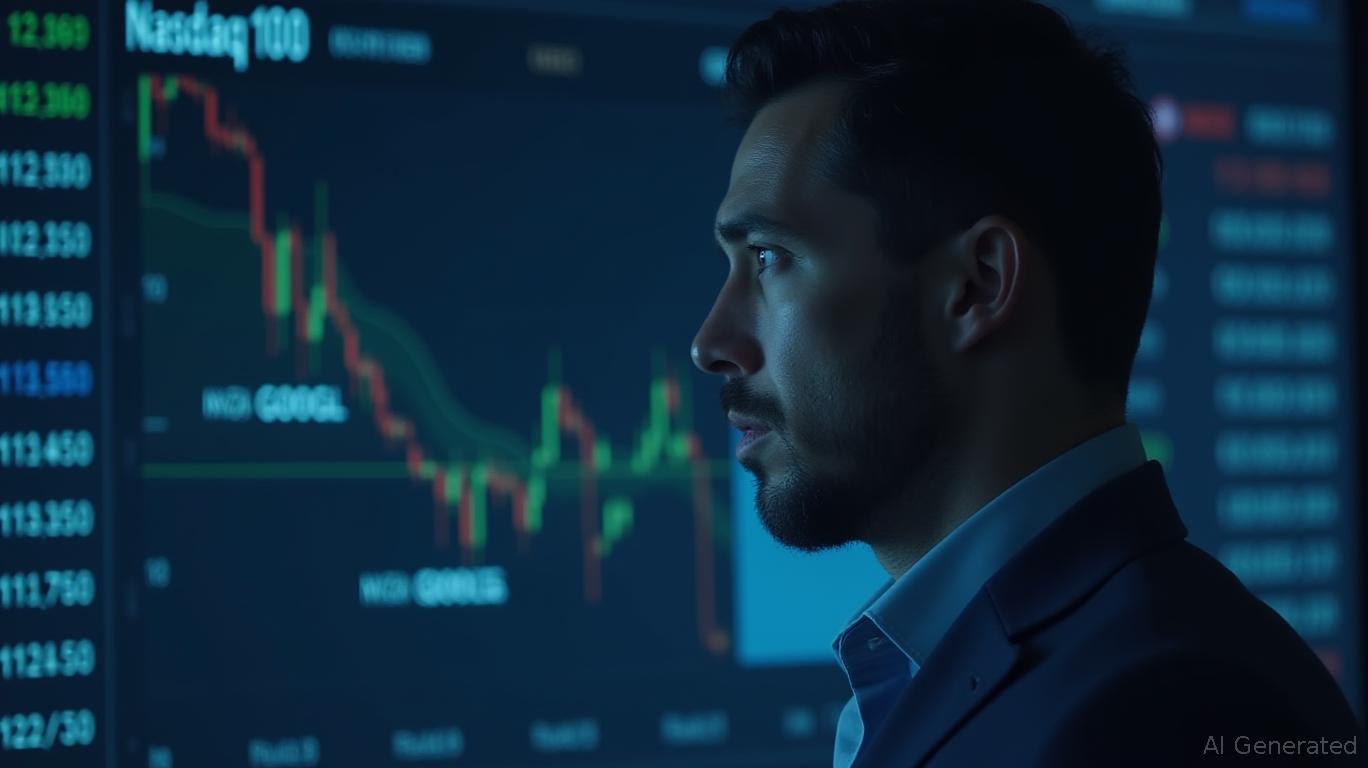Constructing High-Risk/Reward Option Collars in Tech Stocks with Barchart's Tools
In 2025, tech stocks like
(NVDA) and Alphabet (GOOGL) remain volatile, driven by AI advancements, regulatory shifts, and macroeconomic pressures. For investors seeking to capitalize on these swings while mitigating risk, option collars offer a strategic balance. These structures—buying out-of-the-money (OTM) puts and selling OTM calls—can protect portfolios against downside while retaining upside exposure. But how do you identify collars with optimal risk/reward ratios (≥2:1) in high-volatility Nasdaq-100 stocks? Barchart's tools provide a roadmap.Leveraging Barchart's Screening Power
Barchart's Protective Collar Screener automates the hunt for collars by filtering Nasdaq-100 stocks (accessed via the QQQ ETF's constituents) using technical and options metrics. Key parameters include:
- Delta Leg 1 (short call): ≤ -0.25 ensures the call is likely to expire out-of-the-money, reducing assignment risk.
- Strike Distance: Puts and calls should be placed 5-15% away from the stock price to balance protection and cost.
- Expiration: Longer-dated options (e.g., Dec 2025 or Jan 2026) align with medium-term volatility cycles.

Step-by-Step Setup: NVDA and GOOGL Examples
Example 1: NVIDIA (NVDA) Collar
- Stock Price (May 15, 2025): $134
- Collar Structure:
- Put: Struck at $124 (7.4% downside protection).
- Call: Struck at $155 (15.7% upside potential).
- Expiration: Dec. 19, 2025.
- Risk/Reward:
- Max Profit: $2,100 (if called away at $155).
- Max Loss: $990 (if stock drops to $124).
- Ratio: 2.12:1 (15.7% gain vs. 7.4% loss).
Example 2: Alphabet (GOOGL) Collar
- Stock Price (June 11, 2025): $177.35
- Collar Structure:
- Put: Struck at $185 (3.5% downside buffer).
- Call: Struck at $220 (16.15% upside).
- Expiration: Jan. 16, 2026.
- Risk/Reward:
- Max Profit: $3,645 (if stock reaches $220).
- Max Loss: $625 (if stock falls below $185).
- Ratio: 4.5:1 (16.15% gain vs. 3.5% loss).
Stress-Testing Collars for Volatility
Market swings can test even the best strategies. Here's how to evaluate collar resilience:
1. Extreme Downside Scenarios:
- If NVDA drops to $100 (a worst-case 26% decline), the put ensures losses cap at $1,000—not the full $3,400 of an unhedged position.
2. Upside Surprises:
- If GOOGL surges to $250, the collar's $220 call limits gains—but investors can roll the call to a higher strike to reset upside potential.
3. Time Decay:
- Monitor theta (time decay) to avoid overpaying for puts. Barchart's expiration filters prioritize contracts with >60 days to reduce this risk.
Execution Tips for Maximum Efficiency
- Net Cost: Aim for collars with minimal net debit. The NVDA example had a neutral net cost, while GOOGL's $14/share cost was offset by its higher upside.
- Tax Considerations: Use the 60/40 rule for index options to classify gains as long-term, reducing tax burdens.
- Alerts: Save custom screens to track Nasdaq-100 collars with ≥2:1 ratios and set email alerts for new opportunities.
Conclusion: A Disciplined Approach Pays Off
In 2025's volatile tech landscape, Barchart's tools empower investors to construct collars that thrive in uncertainty. By focusing on Nasdaq-100 stocks and screening for strike distances, deltas, and expiration dates that align with risk/reward goals, traders can protect capital while staying positioned for upside. The examples of NVDA and GOOGL demonstrate that even in volatility, disciplined strategies yield rewards.
Investment Recommendation:
- For NVDA, execute the Dec 2025 collar as outlined. Monitor delta shifts and consider rolling the call if the stock rallies.
- For GOOGL, the Jan 2026 collar offers a 4.5:1 ratio—ideal for long-term holders.
In a market where extremes are the norm, Barchart's data-driven approach turns risk into an advantage.

Comments
No comments yet